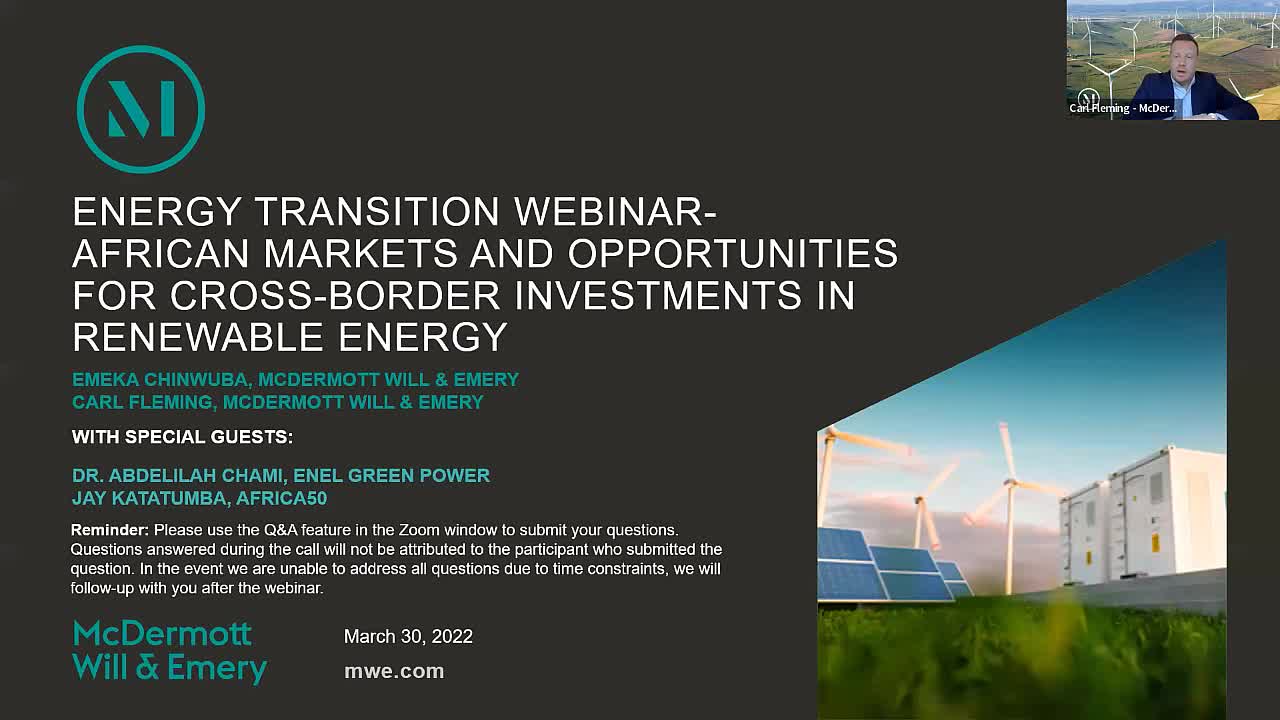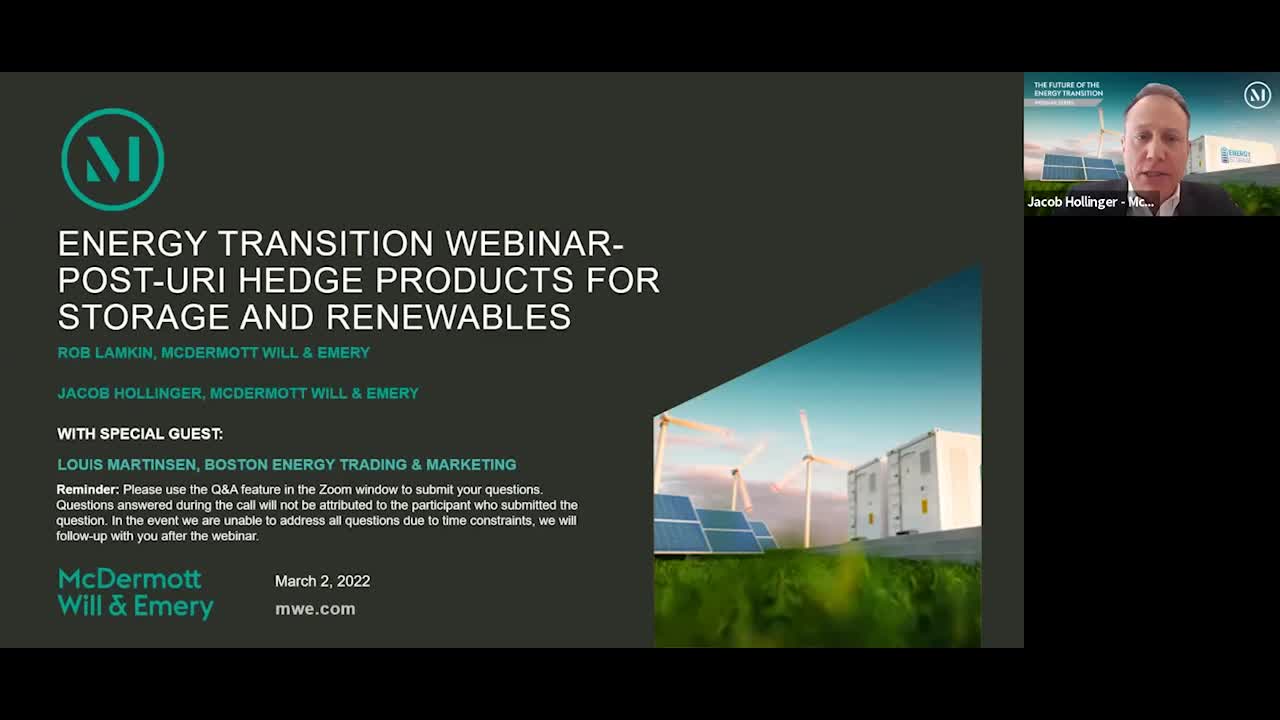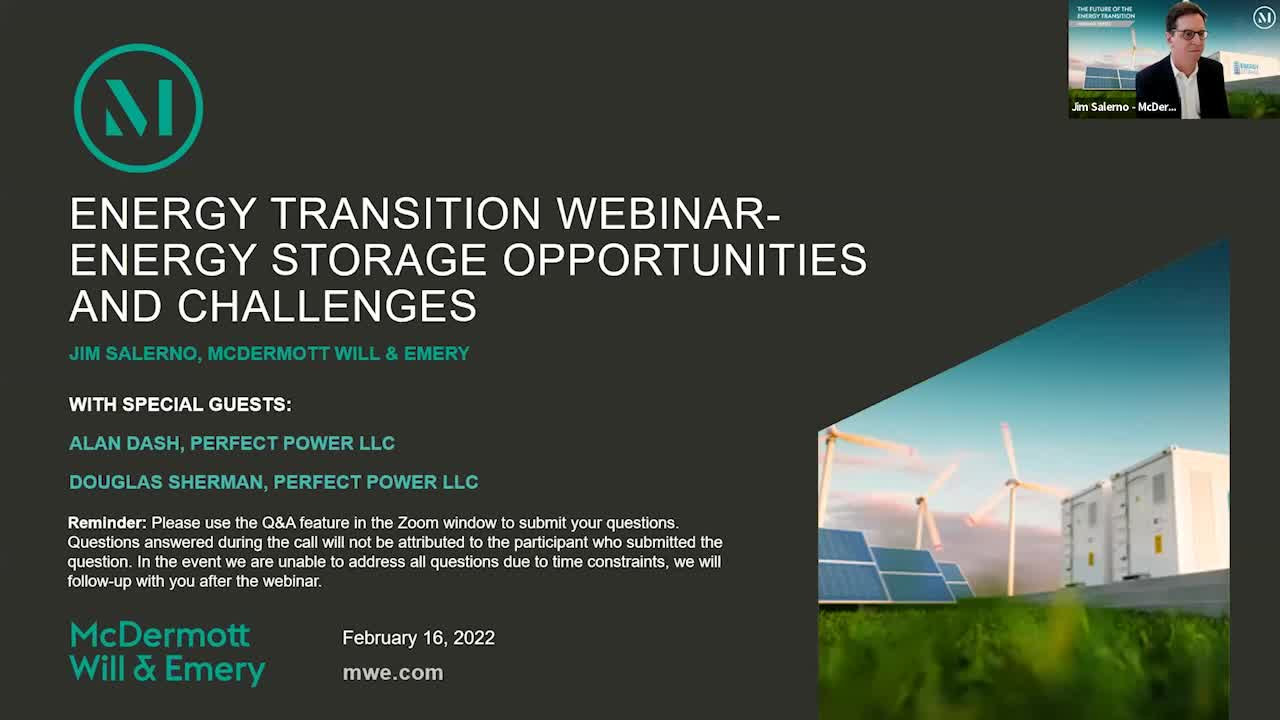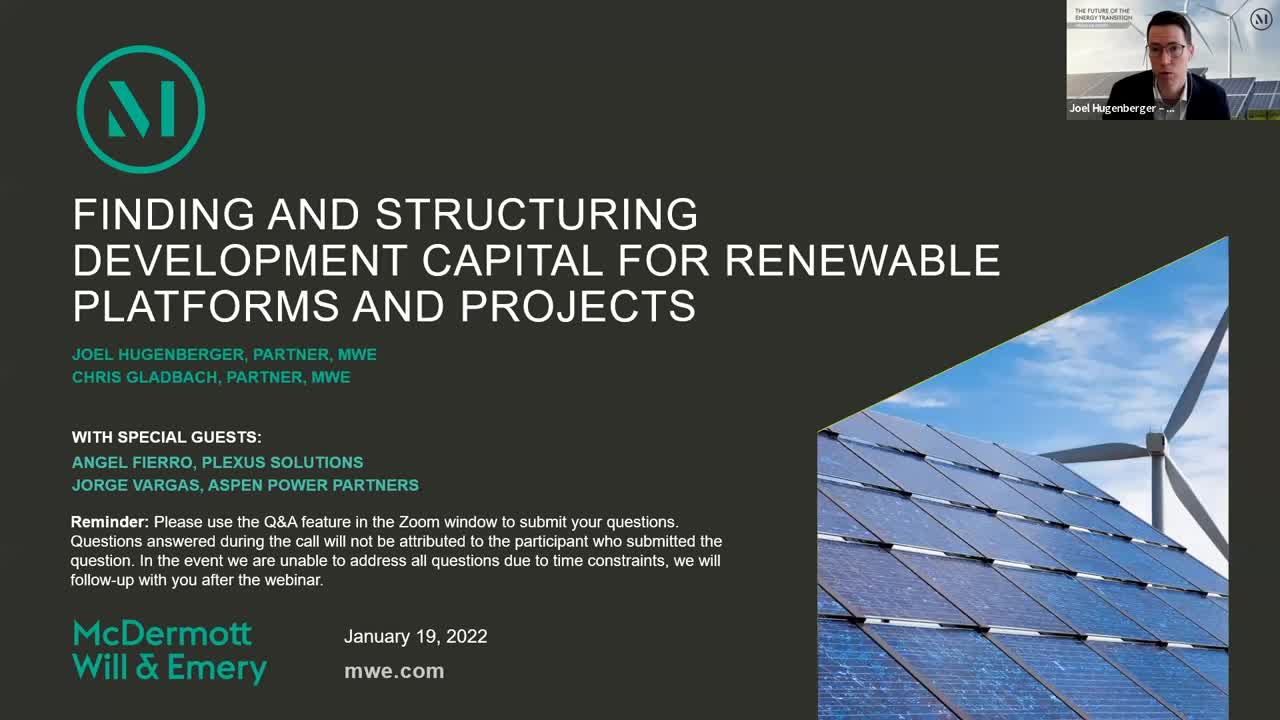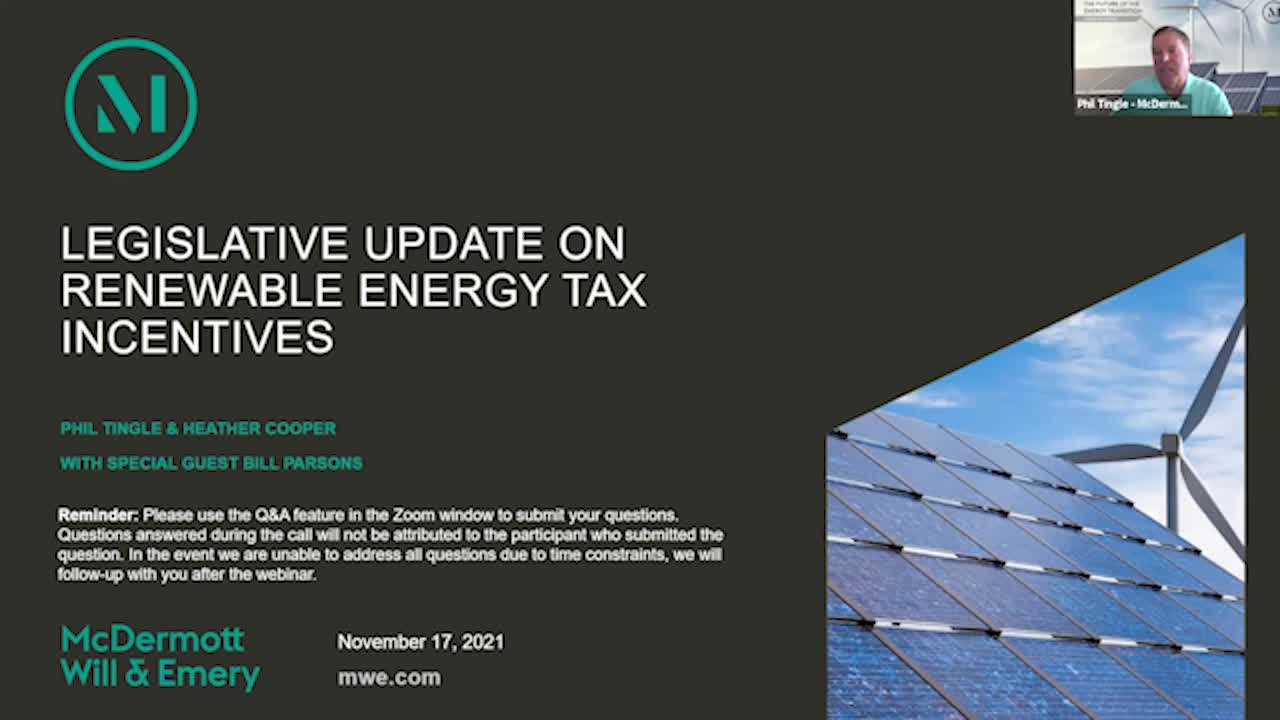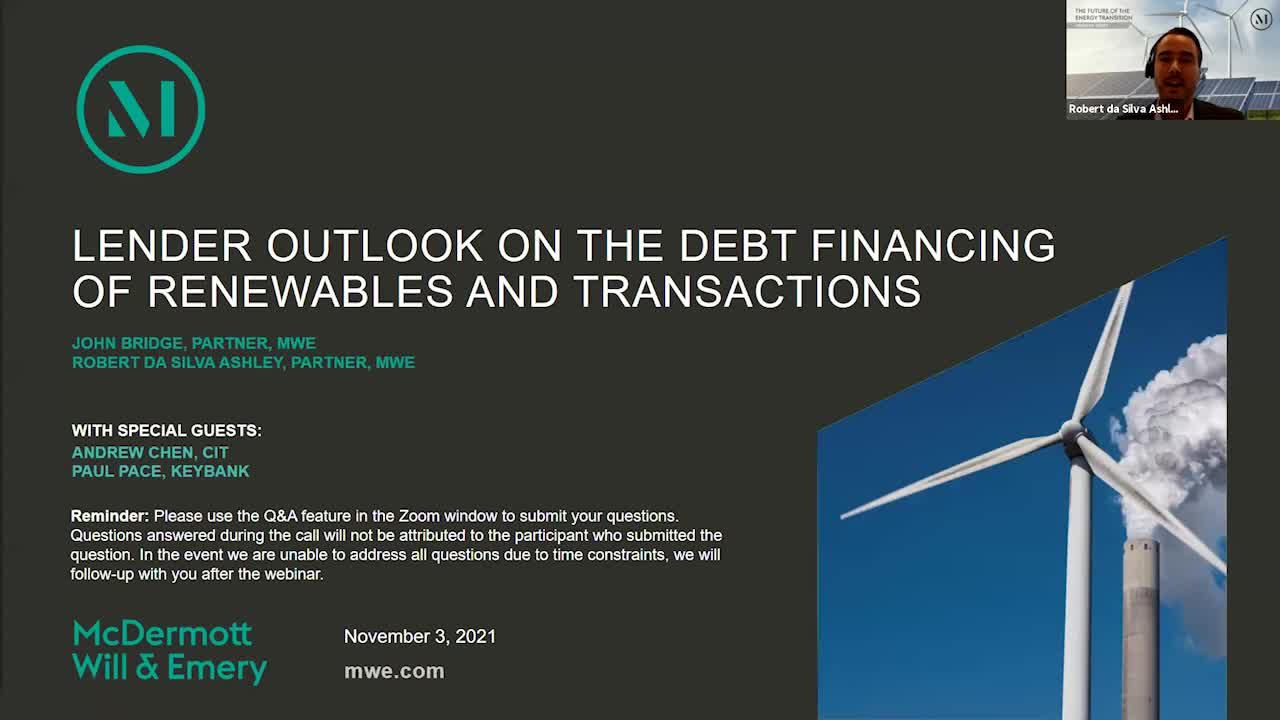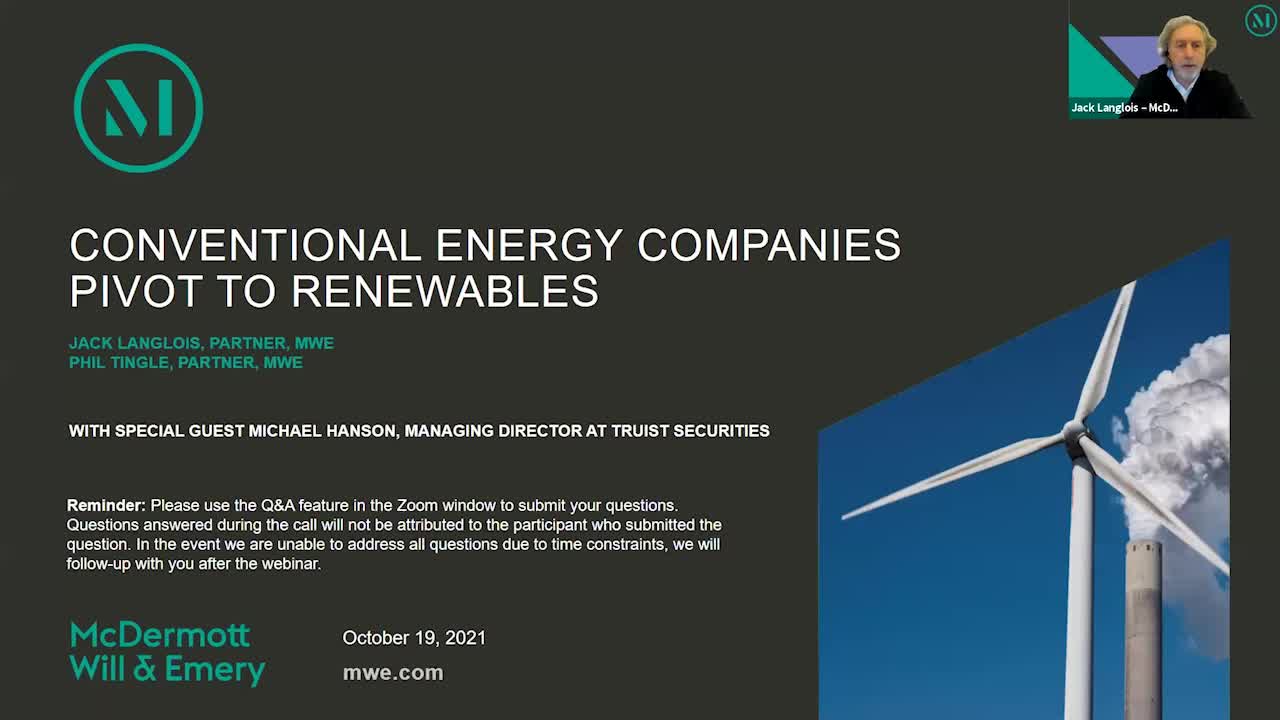On August 25, McDermott Will & Emery kicked off its latest 10-part weekly webinar series focused on navigating the new energy landscape following the enactment of the Inflation Reduction Act of 2022 (the Act)—the largest and most important climate action in US history.
During the first webinar, McDermott Partners Carl Fleming and Edward Zaelke hosted Greg Wetstone, president and CEO of the American Council on Renewable Energy (ACORE), for a discussion on the conversations leading up to this historic legislation and its future impact on the renewable energy industry.

Below are key takeaways from the discussion:
1. The Act represents a major win for the renewable energy industry, particularly its extension of tax credits up to a 10-year (or potentially longer) period, allowing businesses in the energy sector to plan on stable tax platforms for longer than a couple of years—something that is truly unprecedented for the renewables industry. Other major highlights include the introduction of tax credits for energy storage and new technologies, such as hydrogen, programs to encourage domestic manufacturing and the monetization of tax credits. The McDermott Energy & Project Finance team has already seen a spike in standalone energy storage mergers and acquisitions (M&A) activity and a heightened interest in financing structures.
2. Of further noteworthy importance is the Act’s introduction of the ability to transfer tax credits. Although the direct pay provisions of the Act were not as broad as hoped for by many, Greg believes that the transferability provisions will have a significant impact on the renewable energy market. In his view, the constraints on transferability are minimal and allow for the monetization of credits without partnership flips or sale-leasebacks, although there may still be a role for these types of transactions. According to Greg, the market will likely see a mix of tax equity structures and other kinds of financing as there is now more latitude as to how to monetize these credits. The Energy & Project Finance team is currently advising on a number of innovative structures to allow clients to capitalize on this new game changer for tax credits.
3. Another notable feature of the Act is the ability to stack credits related to domestic content, energy communities and wage and apprenticeship requirements. Although further regulations and guidance are needed in these areas, it is agreed amongst industry specialists that appropriately stacking these incentives could make renewable energy projects much more lucrative while creating beneficial societal impacts, such as building a domestic workforce and supply chain and transitioning away from fossil fuel-driven economies. The Energy & Project Finance team is working with various clients to narrow down such requirements and to help properly “stack” these credits.
4. Reducing greenhouse gas emissions was a true driving force behind the Act and is a meaningful step toward addressing climate issues. However, the devil will be in the details regarding how [...]
Continue Reading
read more

 Subscribe
Subscribe